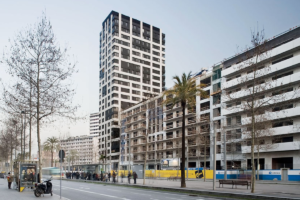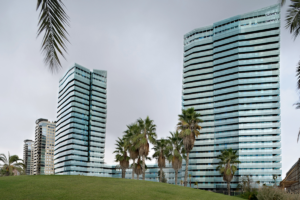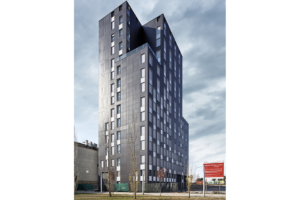MSA+A: more than 30 years creating projects for Barcelona

Josep Lluís Sisternas, architect and co-director of MSA+A
Josep Lluís Sisternas, architect and co-director of MSA+A
What does MSA+A do?
MSA+A employs specialists in all the different areas involved in a project. This includes the drafting of the building project, the design and calculation of structures and installations, construction management, advice and coordination in sustainability and energy certification, and the completion of studies to comply with local and city planning regulations.
MSA+A has designed and constructed a large number of public buildings, more than five thousand homes, and numerous urban planning and public space projects.
MSA+A's projects and works have been published in specialized books and magazines. They have also been included in exhibitions and have won awards and mentions in national and international architecture competitions.
Torre Nova Diagonal, Barcelona
Who founded the company and when?
Adolf Martínez and I founded the company. We started working together as architects in 1983, following a commission from the Diputación de Barcelona and success in some architectural idea competitions.
What do you like most about your job?
The design process, the dialogue with the client and technical specialists, and the evolution of each project until the ideas are consolidated. In short, the work that can still be carried out in conversations with a pencil in one’s hand and during the early stages of drawing and modeling ideas on the computer.
And what do you like least?
The sometimes irrational speed that is required; excessive and frequently ludicrous regulations to comply with; and the banality, uniformity, and aversion to novelty and risk with which some commissions are approached. And the collapse of professional fees since the 2008 crisis. Undervaluing ideas and talent is not a good approach for an advanced country.
What do you think your company excels at?
We provide value: Urban value, which means suiting the building to its setting; material value, which means constructive solutions and good energy performance; formal value, which is to do with the appearance of each building; in short, economic value that affects the developer, and urban value that affects everyone else.
Illa del Mar, Barcelona
What is your main challenge?
To coordinate and reconcile a complex set of objectives and requirements. To provide an appropriate response, despite the constraints of budget, regulations, schedule, etc.
Where is your business located? Do you know why this location was chosen?
We have been located on Calle Trafalgar, very close to Plaza Urquinaona, for almost 30 years in a large building in a central location that is well suited to our needs
What do you like most about the neighborhood where you work?
We are well connected and relatively close to everything, and at the same time, slightly on the periphery of the busiest part of the city. It works well, although location is not a priority for an architectural firm.
How important is Barcelona for your company?
It is crucial. Most of our work takes place in Barcelona and in the Greater Barcelona metropolitan area. We have learned a lot from Barcelona and its architecture, and we try to live up to the high standards the city deserves.
Edifici d’habitatges socials per a joves, Barcelona
With which city would you compare Barcelona?
It is as questionable to compare cities as it is to compare people. Only traces, segments, singularities, coincidences can be compared; globally, each city is in a world of its own
What form of urban model should Barcelona adopt?
Barcelona should retain the ability to be a benchmark in terms of architectural quality and the quality of public space. And that is no joke, because at the moment public spaces are being treated in an extremely frivolous manner.
What best practices from other cities would you like Barcelona to adopt?
Barcelona needs a powerful metropolitan government and an ambitious metropolitan public transport policy. It needs investment in public spaces and it needs to identify opportunities for public-private collaboration, especially in housing. It also requires simplified regulations, greater bureaucratic agility, and a return to a consensus on exciting long-terms plans for the city.
What do you ask of the Barcelona of the future?
To be an economic, scientific and cultural capital; metropolitan integration; the ambition to integrate segments and specific buildings within an extensive territory; and the ability to integrate a highly diverse population within a common identity.
If you want to know the latest English news about Barcelona and the people who bring it to life, sign up to our Blog.










